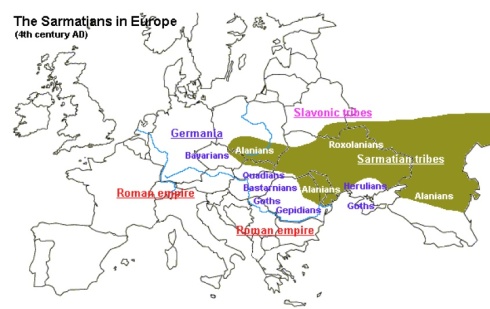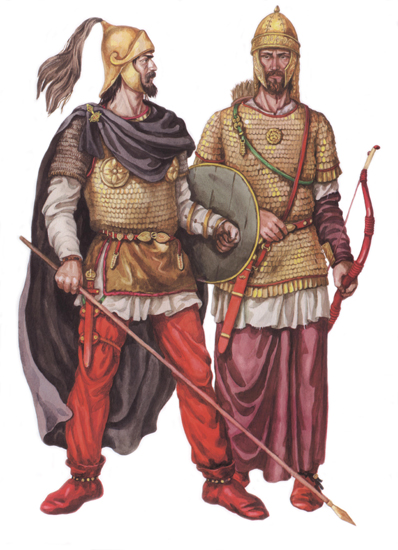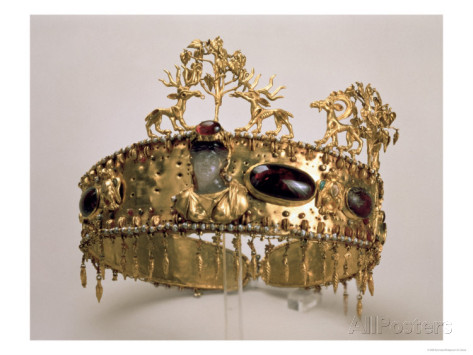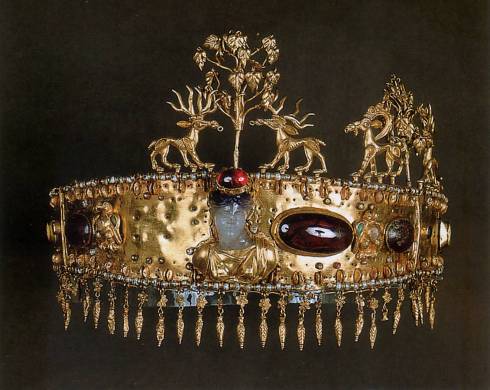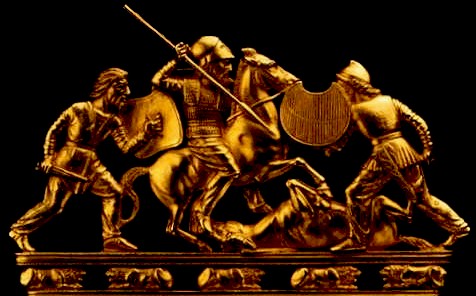You are currently browsing the tag archive for the ‘nomads’ tag.
The Scythians, the wild horse-mounted warriors of the Steppes, sometimes ride onto these pages and off again, back into the billowing mists of Central Asian history. Their name straddles myth and reality: the Scyths were there at the fall of the tower of Babel. They were the children of Echidna and Hercules. They lived in a swath of land somewhere from Romania to Korea in a swath of time from 800 BC to 300AD. They were Europeans with pale skin and blue eyes or Asians with dark slanted eyes. They were fighters, shamans, traders, slavers, and peerless artisans. To Greeks they were the opposite of Greeks. To the Chinese they were the opposite of Chinese.
But really who were the Scythians? Well we don’t exactly know. We have some partial answers to some of these questions, but “Scythian” was a word that was used in classical antiquity the same way we use “Gothic” today (indeed–the last Scythians, who played such a role in the histories written by Byzantine historians from the 2nd through the 5th centuries AD were literally Goths). The word denoted an outlander from the steppes—an ideal of living rather than an ethnicity. Upon the Steppes, in the land the Greeks called Scythia, there were indeed pastoral tribes of equestrian herdsmen (who sometimes turned to war and plunder when circumstances were unusually bad or unusually good) but since they did not write it is difficult to untangle their history. This society was made up of confederated tribes–which tended to specialize at different tasks (herdsmen, ploughmen, smiths, etc.). However above the other tribes were the warrior elites, the royal Scyths, who according to Herodotus, regarded the other tribes as little more than slaves. These closely allied elites were formidable warriors. Without stirrup or saddle they rode horses to battle: even while mounted bareback they fought with composite bows laminated together from horn, hood, and sinew.
The ruling Scythian warriors, or Royal Dahae, were inhumed in spectacular kurgans along with great hordes of treasure. Much of what we know about the Scythians comes from these archaeological finds (and the rest mostly comes from Herodotus who was probably making a lot of it up). A kurgan consisted of a great mound of earth over a central tomb constructed of sacred larchwood. Animal or human sacrifices were draped over the outside of the tomb. Inside the warrior elite lay in state with hordes of treasure. Some of the most spectacular treasures known come from Scythian graves (which definitely deserve their own posting) and consist of golden statues depicting sacred creatures like lions, antlered reindeer, and gryphons. Kurgan tombs of the Scythian warrior elite contained weapons, armour, sumptuous clothing (woven of silk, gold, and hemp) and bowls of coriander seeds and cannabis–which was used in purification rituals and shamanistic rites.
Although the Ancient Greeks might have looked down on the Scythians, numerous modern groups have claimed to be their direct descendants. Among the peoples who have claimed or currently claim Scythian blood and heritage are the Ossetians, Pashtuns, Jats, Parthians, Poles, Picts, Gaels, Hungarians, Serbs, Croats, Scots, Slavs, Anglo-Saxons, and sundry Germans. Like all such ancestral claims, many of these are disputed by scholars, nationalists, rivals and so forth (although Slavic people most certainly have Scythian ties). Being American, I am inclined to think that anybody who wants to claim a particular ethnicity or heritage is welcome to do so, but perhaps that is my mixed Scythian blood talking!

